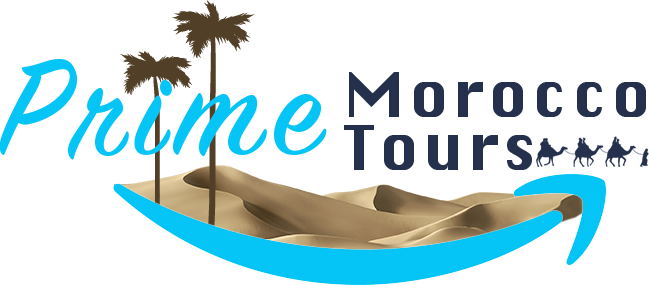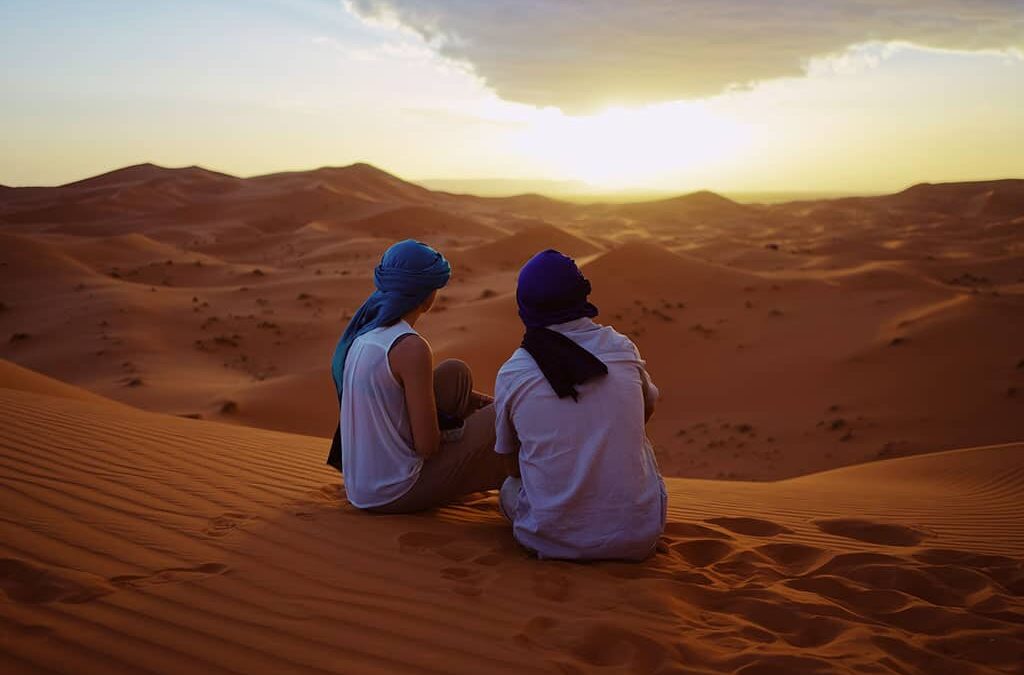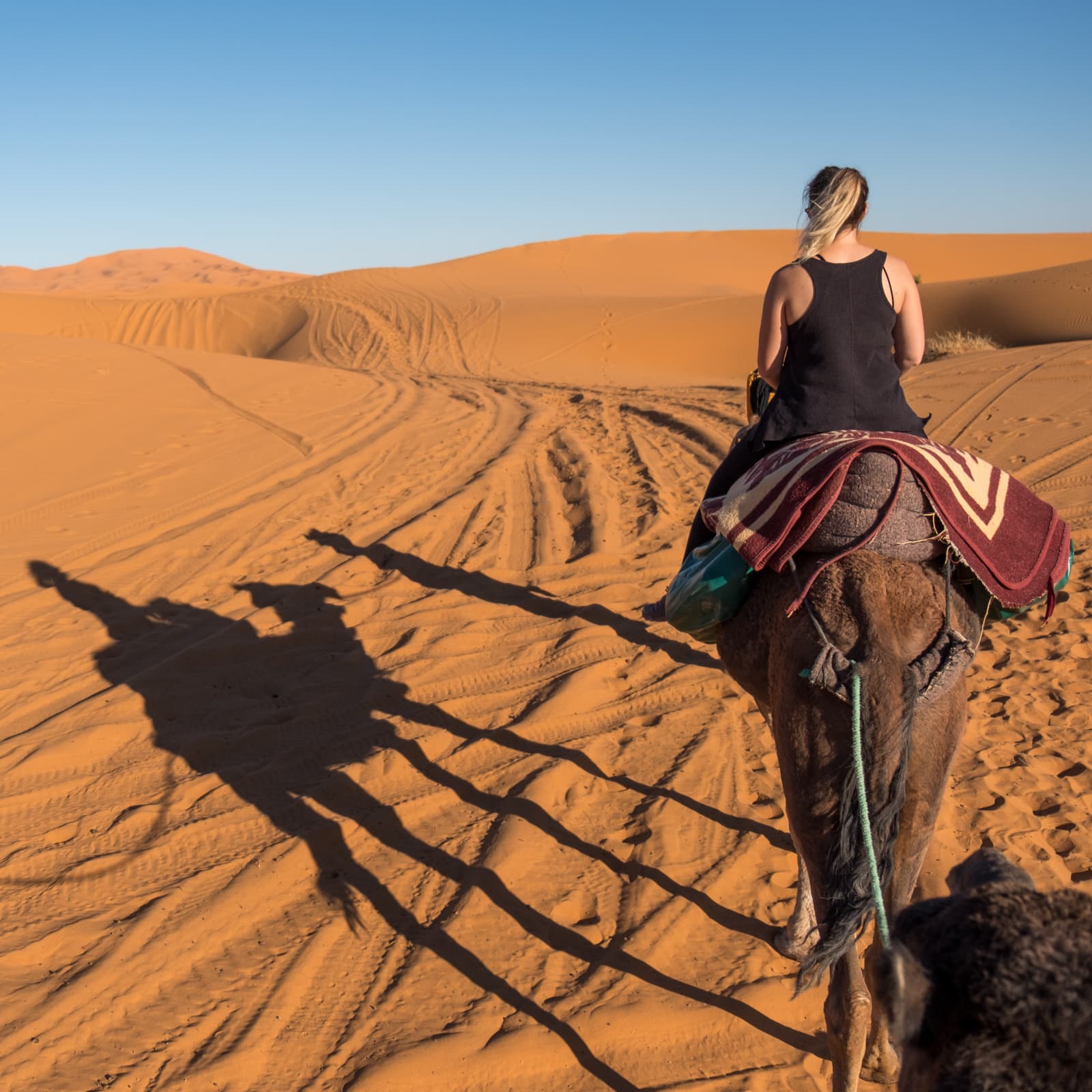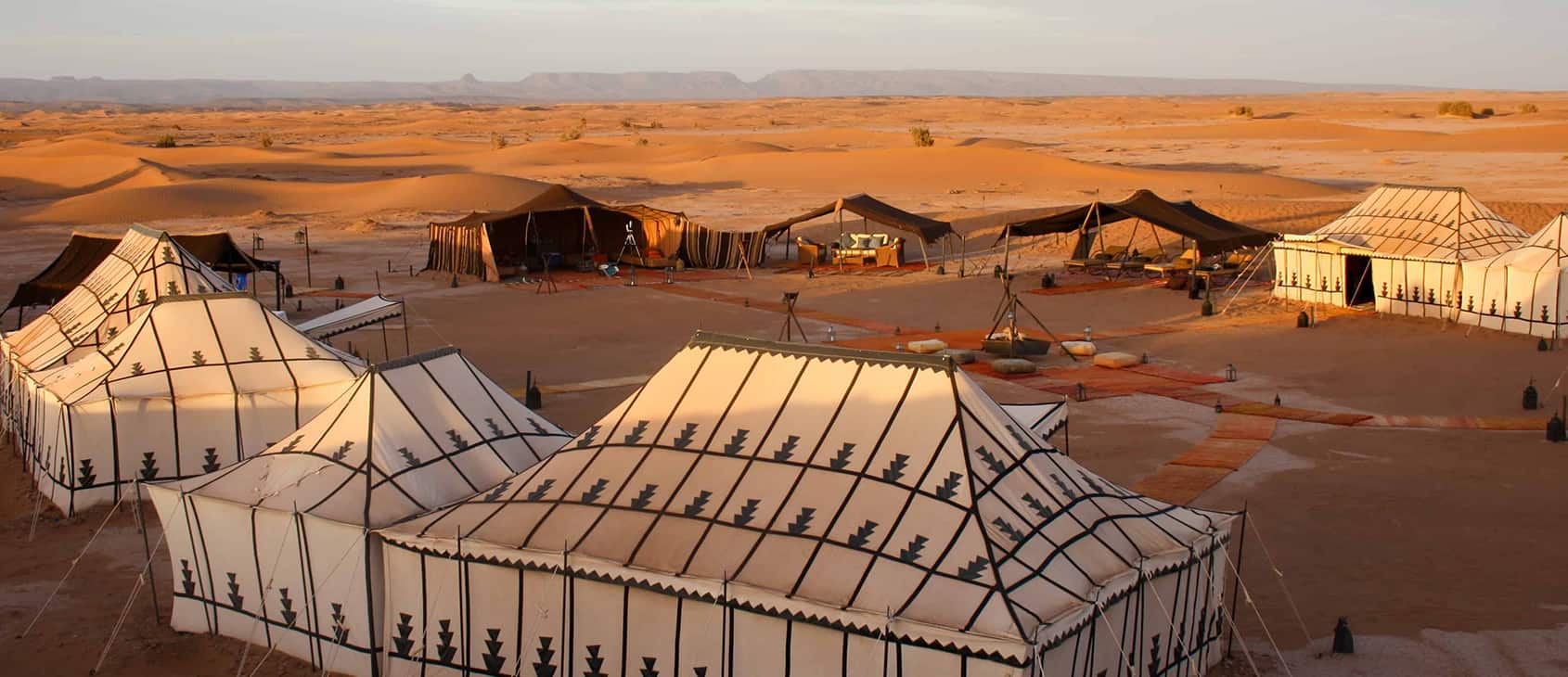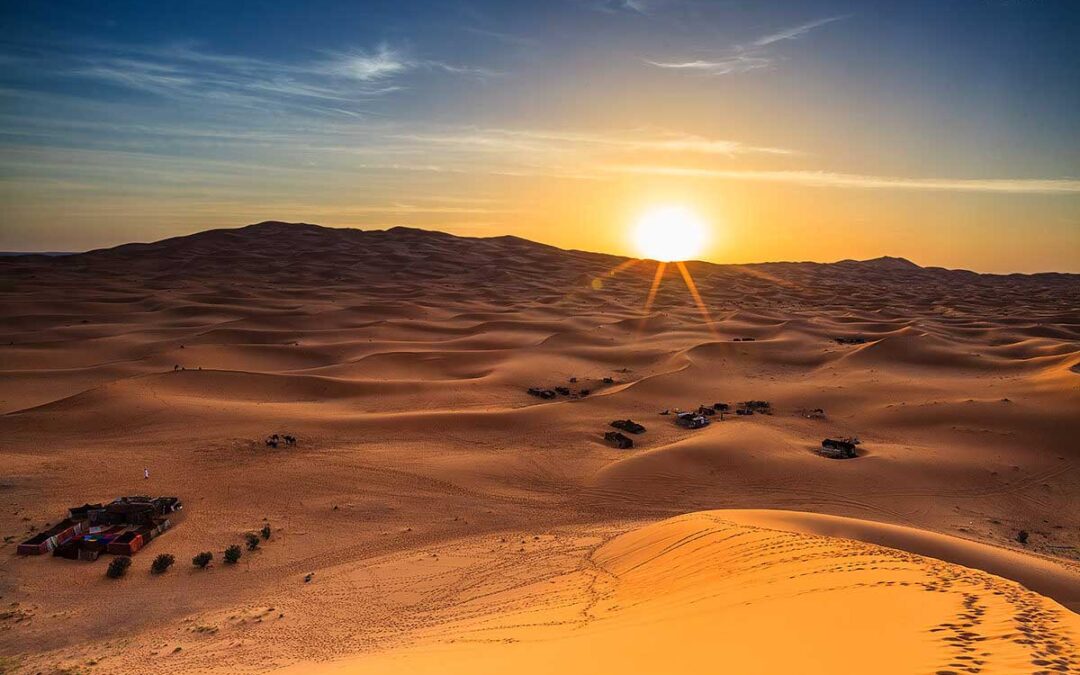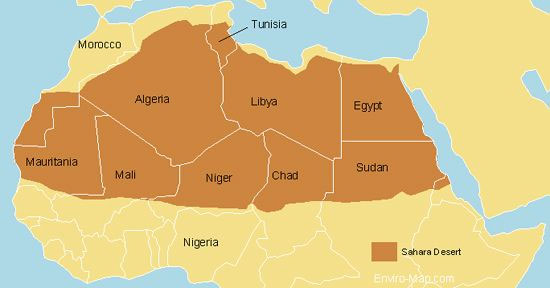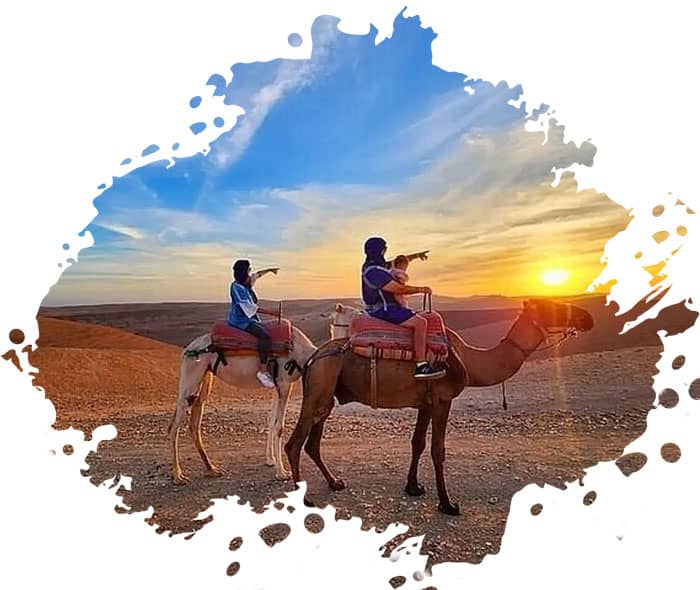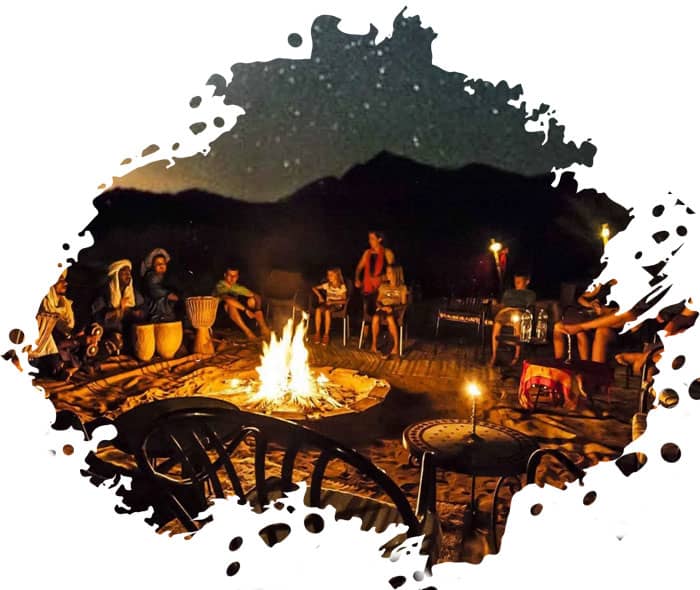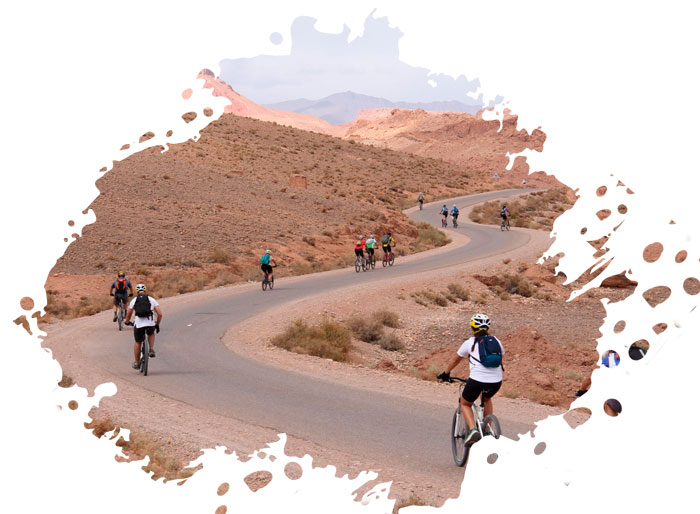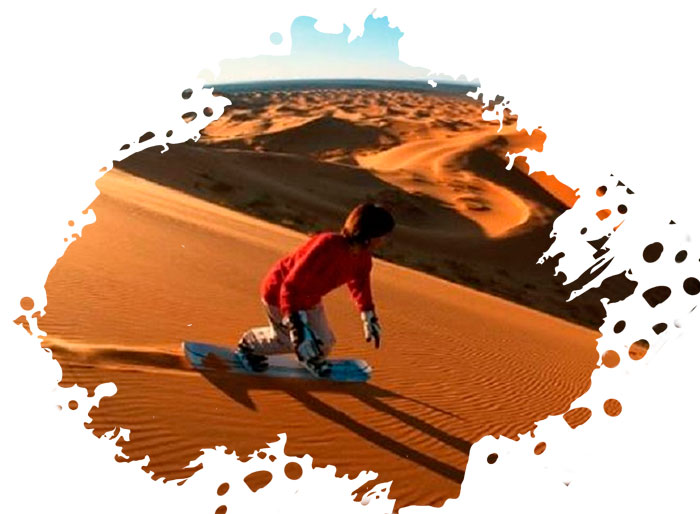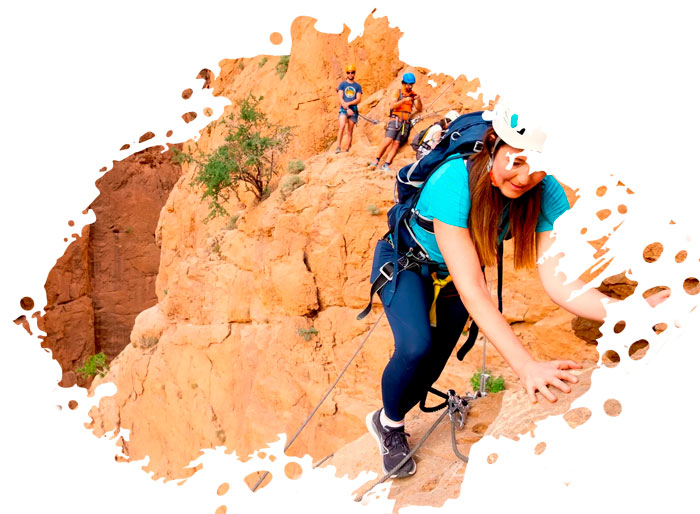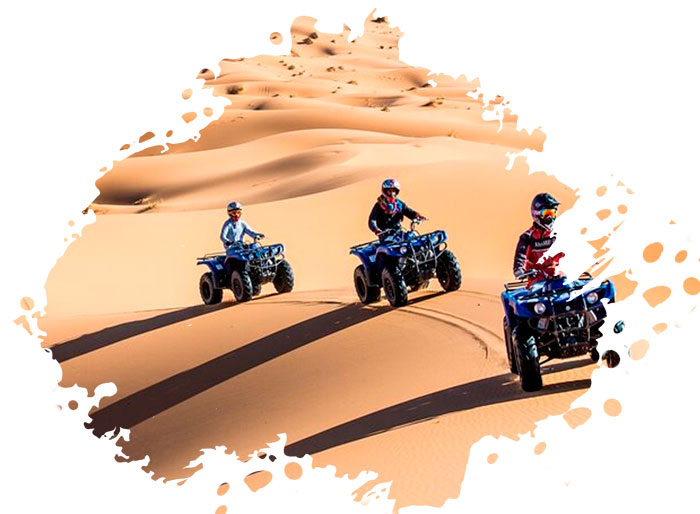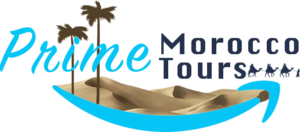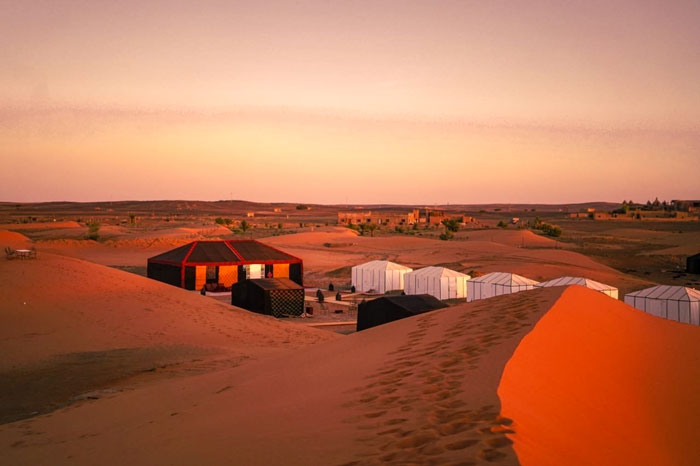
How to Spend a Weekend in Zagora Desert: Your Ultimate 2-3 Day Itinerary
Souk Secrets: Your Guide to Stress-Free and Ethical Shopping in Morocco
The sign at the edge of town reads “Tombouctou 52 jours” (Timbuktu 52 days), a reminder that Zagora was once a crucial stop on ancient caravan routes crossing the Sahara. Today, this gateway to Morocco’s desert south offers something different: an accessible, authentic Sahara experience perfect for a weekend escape.
Unlike the more remote Merzouga, Zagora sits closer to Marrakech and Ouarzazate, making it ideal for travelers with limited time. Yet it delivers the same magic, rolling dunes, starlit nights, Berber hospitality, and that profound desert silence that resets your soul. If you’re wondering how to spend a weekend in Zagora Desert, you’ve come to the right place.
This guide will help you maximize every moment of your 2-3 day desert adventure, from planning your arrival to making the most of your final sunset.
Why Choose Zagora for a Weekend Desert Experience?
Accessibility meets authenticity. That’s Zagora’s sweet spot. Located about 350km from Marrakech (6-7 hour drive), it’s closer than Merzouga yet far enough to feel genuinely remote. The journey itself takes you through the stunning Draa Valley, with its endless palm groves and ancient kasbahs, scenery so striking it’s been featured in countless films.

What makes a weekend in Zagora Desert special:
The Zagora region offers diverse desert landscapes beyond the famous Erg Chigaga dunes. You’ll experience rocky desert plateaus (hammada), acacia-dotted plains, and stunning sand formations. The area is less touristically developed than other desert destinations, meaning more authentic encounters with local Berber communities and fewer crowds at desert camps.
The town itself has character. Founded as a French garrison town, Zagora retains an old-world Saharan trading post atmosphere. Early morning markets buzz with locals shopping for produce, spices, and traditional goods. Kasbahs and adobe buildings reflect traditional desert architecture. And everywhere, date palms, Zagora produces some of Morocco’s finest dates.
For weekend travelers, Zagora hits the perfect balance: remote enough to feel like an adventure, accessible enough to maximize your limited time.
Getting to Zagora: Your Weekend Begins
From Marrakech (Most Common Route)
By Private Car/Tour: The most flexible option and recommended for weekend trips. The 350km journey takes 6-7 hours, winding through:
- The High Atlas Mountains via Tizi n’Tichka Pass (2,260m elevation)
- Ouarzazate, the “Gateway to the Desert” and Morocco’s film capital
- The spectacular Draa Valley, Morocco’s longest river valley lined with kasbahs and palm groves
Most visitors book this as part of a guided tour package. Private drivers cost around 1,500-2,000 MAD ($150-200 USD) one way, while organized tours including transport, accommodation, and activities range from 2,500-5,000 MAD ($250-500 USD) for a complete weekend package.
Pro tip: Leave Marrakech early (6-7 AM) to maximize your first day. Stop at Aït Benhaddou, the UNESCO-listed kasbah that’s appeared in Game of Thrones, Gladiator, and dozens of other films.
By Bus: CTM and Supratours run daily buses from Marrakech to Zagora (around 100-150 MAD/$10-15 USD). Budget-friendly but less flexible—buses take 7-8 hours and limit your exploration options once in Zagora.
From Other Cities
- Ouarzazate: 160km, 2.5-3 hours—convenient if you’re already exploring the region
- Fes/Casablanca: Very long drives (9+ hours)—better suited for longer trips
- Agadir: Possible but requires a very early start (8+ hours)
Perfect Weekend Itinerary: How to Spend 2-3 Days in Zagora Desert
Friday Evening: Arrival and Desert Introduction
5:00-6:00 PM – Arrive in Zagora
After your journey from Marrakech, arrive in Zagora town in the late afternoon. If you’re on a tour, you’ll likely head straight toward the desert. If traveling independently, check into your hotel or meet your desert tour operator.
6:30 PM – Journey to Desert Camp
Most desert camps are located 45-90 minutes from Zagora town, near the Erg Chigaga or Erg Lihoudi dunes. The drive takes you deeper into progressively more remote terrain—paved roads give way to dirt tracks, buildings disappear, and endless desert unfolds.
Many tours include a camel trek to reach your camp (1-2 hours). This sunset camel ride serves as your introduction to desert travel, offering golden-hour views across the dunes as you sway toward your overnight camp.
8:30 PM – Desert Camp Experience
Arrive at camp as darkness falls and stars begin to emerge. Traditional Berber camps offer an authentic desert experience:
- Welcome with mint tea and dates
- Comfortable Berber tents (ranging from basic to luxury depending on your booking)
- Communal dining tent for meals
- Campfire area for music and socializing
9:00 PM – Traditional Dinner
Gather for a traditional Moroccan dinner—typically tagine (slow-cooked stew with meat and vegetables), couscous, fresh bread, and Moroccan salad. Meals are communal affairs, offering chances to meet fellow travelers and chat with your Berber hosts.
10:00 PM – Campfire and Stargazing
After dinner, gather around the campfire for traditional Berber music. Guides often play drums and sing, teaching guests simple rhythms. The atmosphere is magical—firelight flickering against sand dunes, music echoing across the desert, the Milky Way blazing overhead.
Zagora’s remoteness means virtually zero light pollution. On clear nights, you’ll see more stars than you thought possible—shooting stars, satellites, even the faint glow of distant galaxies. Bring a stargazing app to identify constellations.
Overnight: Sleep in traditional Berber tents. These range from simple nomadic-style tents with mattresses and blankets to luxury tents with proper beds, electricity, and private bathrooms. Desert nights can be cold (especially November-March), so extra blankets are usually provided.
Saturday: Full Day Desert Exploration
6:30 AM – Sunrise in the Sahara
Wake before dawn and climb nearby dunes to watch sunrise; the desert’s color transformation from deep blue to pink to gold is mesmerizing. The cool morning air and soft light make this the best time for photography.
Some camps offer sunrise camel rides for those who want to greet the day from camelback.
8:00 AM – Breakfast
Return to camp for a traditional Moroccan breakfast: msemen (flaky flatbread), Moroccan pancakes, fresh bread, jam, honey, olive oil, cheese, mint tea, and coffee. Simple but delicious, especially eaten outdoors with desert views.
9:30 AM – Morning Desert Activities
How you spend your Saturday depends on your interests and booking. Options include:
Camel Trekking: Extended camel rides deeper into the desert. Multi-hour treks let you experience the rhythm of desert travel, passing through varied landscapes—dunes, rocky plateaus, acacia groves, dry riverbeds.
4×4 Desert Expedition: Cover more ground in a 4×4 vehicle, exploring remote areas like:
- Erg Chigaga dunes (Morocco’s largest erg/sand sea)
- Ancient caravan routes and abandoned wells
- Fossil fields (the Sahara was once an ocean)
- Remote nomadic settlements
Sandboarding: Slide down steep dune faces on a board—exhilarating and surprisingly challenging. Great for adrenaline seekers and families with older children.
Desert Walking/Hiking: For those who prefer their own pace, guided walks explore desert ecology, how plants and animals survive here, reading animal tracks, and understanding wind patterns that shape the dunes.
12:30 PM – Return to Camp
As midday heat intensifies, return to camp for lunch and afternoon rest. The Sahara reaches peak temperatures between 1-4 PM, making this ideal siesta time.
1:00 PM – Lunch and Relaxation
Enjoy lunch in the shade, typically lighter fare like salads, grilled vegetables, couscous, or tagine. Spend the afternoon resting in your tent, reading under shade structures, or chatting with guides about desert life.
This downtime is valuable. Desert travel has its own rhythm, and fighting the heat is exhausting. Embrace the slower pace; this is desert time.
4:00 PM – Afternoon Activities
As temperatures cool, venture out again:
Visit a Nomadic Family: Some tours arrange visits to families living in traditional desert encampments. Share tea, learn about their lifestyle, and gain insight into how people adapt to desert conditions. These visits should be respectful, arranged through your guide, and ideally include purchasing handicrafts to support the family.
Explore Nearby Villages: Small settlements near the desert edge offer glimpses of oasis life. Palm groves provide precious shade and dates, while traditional irrigation systems (khettaras) channel scarce water to crops.
Sunset Dune Climbing: Climb to high dune ridges for sunset panoramas. The evening light is sublime—long shadows emphasizing dune curves, the sky cycling through spectacular colors.
7:00 PM – Evening Festivities
Return to camp for your second evening. Many travelers say the second night feels even more special, you’re more relaxed, more attuned to desert rhythms, and the experience has deepened.
Enjoy another traditional dinner, more campfire music (perhaps you’ll join in this time), and conversation under the stars. Some camps offer Berber dance performances or storytelling sessions.
Overnight: Your second night in the desert. By now, the sounds, wind across sand, distant animal calls, and the profound silence feel familiar rather than foreign.
Sunday: Morning Departure or Extended Exploration
6:30 AM – Final Sunrise
Wake for one last desert sunrise. This morning feels different, tinged with the awareness you’ll soon leave. Take time to absorb the experience, walk the dunes alone, and commit the feeling to memory.
8:00 AM – Breakfast and Departure Preparation
Final breakfast at camp, then pack up and prepare for departure.
Two Options for Sunday:
Option A – Return to Marrakech (for 2-day weekend)
- 9:00 AM: Depart camp via camel or 4×4
- 10:00 AM: Leave Zagora town heading back to Marrakech
- 12:30 PM: Lunch stop in Ouarzazate or Aït Benhaddou
- 5:00-6:00 PM: Arrive back in Marrakech
Option B – Extended Desert Exploration (for 3-day weekend)
If you have an extra day, maximize it by:
Morning: Explore Zagora Town
- Visit the old pottery workshops where traditional ceramics are made
- Browse the Wednesday and Sunday souks (if timing aligns)
- See the famous “Tombouctou 52 jours” sign
- Explore Kasbah Amezrou, one of the region’s oldest kasbahs
Midday: Draa Valley Exploration
- Drive through the Draa Valley, stopping at viewpoints
- Visit Tamegroute, a historic village famous for:
- Ancient Quranic library (Zaouia Naciria) with manuscripts dating back centuries
- Green pottery workshops producing distinctive emerald-glazed ceramics
- Underground kasbah with intricate passageways
Afternoon: Scenic Return
- Stop at panoramic viewpoints overlooking the Draa Valley’s palm groves
- Visit additional kasbahs along the route
- Arrive in Marrakech by the evening
Best Times for a Weekend in Zagora Desert
Spring (March-May): Ideal conditions with comfortable temperatures (20-28°C days, 10-15°C nights), blooming desert flowers after winter rains, and pleasant travel weather. This is peak season, book in advance.
Autumn (September-November): Equally excellent with warm days (25-32°C) and cool evenings (12-18°C). September can still be hot; October-November are perfect. The date harvest season adds a special atmosphere.
Winter (December-February): Days are mild (15-20°C) but nights can drop near freezing. Bring serious cold-weather gear for overnight camps. Fewer tourists mean better prices and more solitude. Clear skies offer spectacular stargazing.
Summer (June-August): Extremely hot (40-45°C+), making midday activities uncomfortable. Only recommended if you can tolerate intense heat. Sunset/sunrise activities are still enjoyable, and budget travelers find excellent deals.
Accommodation Options: From Budget to Luxury
In Zagora Town
If you want to base yourself in town rather than desert camps:
Budget (300-600 MAD/$30-60): Basic hotels with AC, private bathrooms, breakfast. Clean but simple.
Mid-range (600-1,200 MAD/$60-120): Comfortable riads/hotels with pools, traditional decor, good restaurants. Examples: Riad Lamane, Hotel Kasbah Azalay.
Luxury (1,200+ MAD/$120+): Upscale properties with pools, spas, quality dining. Rare in Zagora itself but available in the Draa Valley.
Desert Camps
Basic/Standard Camps (400-800 MAD/$40-80 per person):
- Traditional Berber tents with mattresses and blankets
- Shared bathroom facilities (sometimes basic)
- Traditional meals included
- Campfire entertainment
- Authentic nomadic experience
Comfort Camps (800-1,500 MAD/$80-150 per person):
- Larger tents with proper beds
- Private or semi-private bathrooms
- Better food quality and variety
- Additional activities included
- Mix of authenticity and comfort
Luxury Desert Camps (1,500-3,000+ MAD/$150-300+ per person):
- Spacious tents with hotel-quality beds and linens
- Private en-suite bathrooms with hot showers
- Electricity/solar power
- Gourmet meals
- Premium service while maintaining desert atmosphere
- Examples: Erg Chigaga Luxury Desert Camp, Sahara Luxury Camp
What’s included varies by camp and booking, so always confirm: meals, activities, transportation, guide services, camel treks.
Ready to plan your Zagora weekend?
Your desert adventure is waiting just beyond the palm groves. Pack your bag, book your tour, and the preparation is on us! Reach us now by one click!
Desert Activities: Beyond the Basics
Cultural Experiences
Berber Music and Dance: Most camps offer evening performances. The rhythmic drumming and call-and-response singing have spiritual significance in Berber culture.
Traditional Crafts: Learn about Berber weaving, jewelry-making, or pottery. Some tours arrange hands-on workshops.
Tea Ceremony: The preparation and serving of mint tea is a ritual art. Guides often demonstrate the dramatic high-pour technique.
Stargazing Sessions: Some camps offer guided astronomy sessions, identifying planets, constellations, and explaining how nomads navigated by stars.
Adventure Activities
Quad Biking: Race across desert plains and dunes. Typically 1-2 hour sessions (300-600 MAD/$30-60). Exhilarating but noisy—not for those seeking pure desert tranquility.
Sandboarding: Available at most camps near dunes. Equipment usually included, or rent boards in Zagora (50-100 MAD).
Photography Tours: Specialized tours focusing on capturing desert landscapes, guiding you to best viewpoints at optimal light times.
Extended Camel Treks: Multi-day camel journeys deeper into the Sahara for those who can extend their weekend. These follow ancient caravan routes and camp under stars.
Nature and Ecology
Desert Wildlife Watching: Though seemingly barren, the Sahara supports life—desert foxes, lizards, scorpions, beetles, migratory birds. Early morning/evening are best for spotting wildlife.
Fossil Hunting: The Sahara was once underwater. Guides can take you to areas where trilobites and other ancient marine fossils surface.
Desert Flora Study: Learn about resilient plants adapted to extreme conditions, acacias, date palms, and desert herbs used in traditional medicine.
Food and Dining: What to Expect
Desert camp dining is surprisingly good, emphasizing traditional Moroccan flavors cooked in traditional ways.
Typical Meals:
Breakfast: Bread, msemen or harcha (semolina flatbread), jams, honey, cheese, olives, mint tea, coffee. Simple but energizing.
Lunch: Lighter fare, salads (Moroccan, tomato-cucumber), tagine or couscous with vegetables or meat, fresh fruit, mint tea.
Dinner: The main event—often elaborate tagines (chicken with preserved lemons and olives, lamb with prunes and almonds, vegetable medleys), couscous, bread, multiple salad courses, fruit, and tea.
Dietary Restrictions: Most camps accommodate vegetarian diets easily (vegetables, legumes, couscous). Vegan and gluten-free options require advance notice and may be more limited. Inform your tour operator when booking.
Water: Bottled water is provided. Drink plenty, desert air is extremely dehydrating.
Budget Planning: Weekend Cost Breakdown
All-Inclusive Tour Packages (recommended for first-timers):
- Budget tours: 2,000-3,000 MAD ($200-300 USD) including transport from Marrakech, basic camp, meals, activities
- Mid-range tours: 3,000-4,500 MAD ($300-450 USD) with better camps, more activities, smaller groups
- Luxury tours: 5,000-10,000+ MAD ($500-1,000+ USD) featuring premium camps, private transport, enhanced experiences
Independent Travel Budget:
- Bus to Zagora: 100-150 MAD
- Zagora accommodation: 300-1,200 MAD per night
- Desert camp booking: 400-2,000 MAD per person
- Meals in town: 50-150 MAD per meal
- Activities: 200-600 MAD each
- Total: roughly 1,500-4,000 MAD ($150-400) minimum plus transport
Additional Expenses:
- Tips for guides and camp staff: 100-200 MAD
- Souvenirs and crafts: 100-500 MAD
- Extra activities: 200-600 MAD
- Snacks and drinks: 50-100 MAD
Money-saving tips: Travel during shoulder/off-season (November-February, July-August), book directly with local operators rather than through international agencies, share private transport costs with other travelers, choose basic camps, bring your own snacks.
Safety and Practical Considerations
Health:
- Stay hydrated constantly, as dehydration happens fast in desert conditions
- Use sun protection religiously
- Avoid ice in drinks to prevent stomach issues
- Bring any personal medications (pharmacies only in towns)
Seguridad:
- Reputable tour operators maintain good safety standards
- Guides know desert conditions and emergency protocols
- Mobile service is limited in remote areas—inform family of itinerary before leaving
- Travel insurance is recommended
Cultural Sensitivity:
- Dress modestly (cover shoulders and knees)
- Ask permission before photographing people
- Remove shoes when entering tents
- Accept offered tea (refusing can be seen as rude)
- Learn basic Arabic/Berber greetings (locals appreciate the effort)
Scams and Tourist Traps:
- Book through reputable operators with good reviews
- Clarify what’s included in your package
- Be wary of extremely cheap tours (may cut corners on safety, comfort, or fair wages)
- In Zagora town, some shops use aggressive sales tactics, polite but firm “no thank you” works
Making Connections: Beyond Tourism
What transforms a good weekend in Zagora Desert into an unforgettable one is human connection. Your Berber guides aren’t just service providers, they’re people whose families have lived in and loved this desert for generations.
Ask about their lives. Learn a few words of Berber or Arabic. Share stories around the campfire. Show genuine interest in their culture. These interactions often become the most treasured memories.
Many travelers maintain friendships with their guides long after returning home, exchanging messages and photos, and sometimes returning for deeper experiences.
Supporting local communities: Choose tour operators that employ local Berbers as guides, purchase crafts directly from artisans, tip fairly (100-200 MAD for guides, 50-100 MAD for camp staff is standard), and respect the environment (pack out all trash).
Frequently Asked Questions
Is a weekend enough time to experience Zagora Desert?
Absolutely! While longer trips offer deeper immersion, a well-planned weekend provides an authentic desert experience, camel treks, overnight camping, stargazing, cultural encounters, and stunning landscapes. Zagora’s accessibility makes it perfect for weekend escapes.
What's the difference between Zagora and Merzouga?
Zagora is closer to Marrakech (6-7 hours vs. 9-10 hours), making it better for short trips. Merzouga has taller, more dramatic dunes (Erg Chebbi) and feels more remote. Zagora offers easier access to the Draa Valley’s cultural sites. Both provide authentic Sahara experiences.
Can I visit Zagora in summer?
Yes, but be prepared for extreme heat (40-45°C+). Early morning and evening activities remain enjoyable, and you’ll find fewer tourists and lower prices. Bring serious sun protection and stay hydrated.
Is it safe to travel to Zagora?
Yes, Zagora is safe for tourists. Morocco’s southern regions are politically stable, and tourism is economically important so visitors are well-treated. Use reputable tour operators, follow standard travel safety practices, and you’ll have no issues.
What if I can't ride camels?
Most tours offer 4×4 alternatives to reach desert camps. Inform your operator in advance. Camel riding isn’t mandatory, you can enjoy desert camps via vehicle transport.
Are there showers in desert camps?
Varies by camp level. Basic camps may have shared facilities with cold water or no showers (wet wipes suffice). Comfort and luxury camps typically offer hot water showers, some even private en-suites. Check when booking.
Can I see the Milky Way in Zagora?
On clear nights, absolutely! Zagora’s remoteness and minimal light pollution create spectacular stargazing conditions. The Milky Way is clearly visible to the naked eye, along with countless stars, planets, and frequent shooting stars.
Should I book in advance or upon arrival?
Booking (at least a week, ideally 2-4 weeks) is recommended, especially during peak seasons (March-May, September-November). Last-minute bookings limit your options and may cost more.
What language do people speak?
Local Berbers speak Berber (Tamazight), Arabic, and often French. English is common among tour guides and in tourist areas. Basic French helps but isn’t essential with tour groups.
Can I bring children?
Yes! Desert weekends are family-friendly. Children typically love camel riding, dunes, campfires, and stargazing. The minimum age for camel riding is usually 4-5 years. Inform operators about children’s ages when booking to ensure appropriate accommodations.
Ready to plan your Zagora weekend?
Your desert adventure is waiting just beyond the palm groves. Pack your bag, book your tour, and the preparation is on us! Reach us now by one click!
Beyond Your Weekend: Extending Your Stay
If you can extend beyond a weekend, consider:
Trekking Deeper into the Desert: Multi-day camel treks to Erg Chigaga (Morocco’s largest dune system) offer more remote, authentic experiences.
Cultural Deep Dive: Spend extra time in Draa Valley villages, learning traditional crafts, cooking, or agriculture. Several operators offer cultural immersion programs.
Film Tourism: The region around Ouarzazate and Zagora hosts numerous film studios (Atlas Studios) and locations. Movie buffs can extend their trip exploring these sites.
Connecting to Other Destinations: From Zagora, adventurous travelers can continue to Merzouga (long drive but possible), explore the Dades Valley, or head toward the Atlantic coast.
The Weekend That Changes You
Here’s what people don’t tell you about spending a weekend in Zagora Desert: it’s not about checking off activities or capturing Instagram-perfect photos (though you’ll get those). It’s about discovering what silence actually sounds like. About the unexpected joy of sipping mint tea as stars emerge. About connecting with people whose lives are so different from yours yet somehow finding common ground around a campfire.
The Sahara has this way of stripping away the unnecessary. Out there, surrounded by endless sand and sky, your worries feel smaller. Your perspective shifts. You remember that you’re part of something much larger—this ancient desert that existed long before you and will persist long after.
A weekend in Zagora Desert is enough to taste this feeling. Some people return from desert trips unchanged. Others return transformed, carrying the desert inside them forever—in quiet moments, in their approach to life, in a new appreciation for simplicity and vastness.
Your weekend awaits. The desert has been there for millennia, patiently waiting. It will still be there next week, next month, next year. But your life is happening now. The time to experience Zagora is whenever you decide to go.
Pack your bag, book your tour, and prepare for one of those rare travel experiences that exceeds expectations. The Sahara doesn’t disappoint those who approach it with open hearts.
Fifty-two days to Timbuktu, but only one weekend to the magic of the Moroccan Sahara. That weekend might just be the most memorable you’ll ever spend.
